*NURSING > QUESTIONS & ANSWERS > AHA PALS Exam Questions Fall 2021/2022.. 100% proven pass rate (All)
AHA PALS Exam Questions Fall 2021/2022.. 100% proven pass rate
Document Content and Description Below
AHA PALS Exam Questions Fall 2021/2022. 1. A 5-year-old child presents with lethargy, increased work of breathing, and pale color. The primary assessment reveals that the airway is open and the resp... iratory rate is 30/min, with crackles heard on auscultation. The cardiac monitor shows sinus tachycardia at a rate of 165/min. The pulse oximeter displays an oxygen saturation of 95% and a pulse rate of 93/min. On the basis of this information, which of the following provides the best interpretation of the oxygen saturation of 95% by pulse oximetry? A. Reliable; no supplementary oxygen is indicated B. Reliable; supplementary oxygen should be administered C. Unreliable; no supplementary oxygen is indicated D. Unreliable; supplementary oxygen should be administered 2. A 3-year-old child was recently diagnosed with leukemia and has been treated with chemotherapy. The child presents with lethargy and a high fever. Heart rate is 195/min, respiratory rate is 36/min, blood pressure is 85/40 mm Hg, and capillary refill time is less than 2 seconds. What is the child's most likely condition? A. Septic shock B. Hypovolemic shock C. Significant bradycardia D. Cardiogenic shock 3. A 2-week-old infant presents with irritability and a history of poor feeding. Blood pressure is 55/40 mm Hg. What term describes this infant's blood pressure? A. Hypotensive B. Normal C. HypertensiveD. Compensated 4. During a resuscitation attempt, the team leader orders an initial dose of epinephrine at 0.1 mg/kg to be given 10. What should the team member do? A. Administer the drug as ordered B. Administer 0.01 mg/kg of epinephrine C. Respectfully ask the team leader to clarify the dose D. Refuse to administer the drug 5. Which of the following is a characteristic of respiratory failure? A. Inadequate oxygenation and/or ventilation B. Hypotension C. An increase in serum pH (alkalosis) D. Abnormal respiratory sounds 6. Which of the following is most likely to produce a prolonged expiratory phase and wheezing? A. Disordered control of breathing B. Hypovolemic shock C. Lower airway obstruction D. Upper airway obstruction 7. A 4-year-old child presents with seizures and irregular respirations. The seizures stopped a few minutes ago. Which of the following most likely to be abnormal? A. Vascular resistance B. Pulse rate C. Lung complianceD. Control of breathing 8. What abnormality is most likely to be present in children with acute respiratory distress caused by lung tissue disease? A. Decreased oxygen saturation B. Stridor C. Normal respiratory rate D. Decreased respiratory effort 9. An alert 2-year-old child with an increased work of breathing and pink color is being evaluated. Heart rate is 110/min, and respiratory rate is 30/min. What would best describe this patient's condition? A. Respiratory distress B. Respiratory arrest C. Respiratory failure D. Disordered control of breathing 10. The parents of a 7-year-old child who is undergoing chemotherapy report that the child has been febrile and has not been feeling well, with recent onset of lethargy. Assessment reveals the following: The child is difficult to arouse, with pale color. The child's heart rate is 160/min, respiratory rate is 30/min, blood pressure is 76/45 mm Hg, capillary refill time is 5 to 6 seconds, and temperature is 103°F (39.4°C). What is the most appropriate intervention? A. Obtain vascular access and administer 20 mL/kg of isotonic crystalloid over 30 minutes B. Obtain vascular access and administer 20 mL/kg of isotonic crystalloid over 5 to 10 minutes C. Obtain immediate blood cultures and chest x-ray D. Obtain expert consultation with an oncologist to determine the chemotherapeutic regimen11. A 2-year-old child presents with a 4-day history of vomiting. The initial impression reveals an unresponsive child with intermittent apnea and mottled color. Heart rate is 166/min, respiratory rate is now being supported with bag-mask ventilation, capillary refill time is 5 to 6 seconds, and temperature is 102°F (38.9°C). What is the best method of establishing immediate vascular access? A. Two providers may attempt peripheral vascular access twice each B. Three providers may attempt peripheral vascular access once each C. Place a central venous line D. Place an intraosseous line 12. What is the appropriate fluid bolus to administer for a child with hypovolemic shock with adequate myocardial function? A. 10 mL/kg normal saline B. 20 mL/kg of 5% dextrose and 0.2% sodium chloride C. 20 mL/kg normal saline D. 10 mL/kg lactated Ringer's 13. An alert toddler presents with a barking cough, moderate stridor, and moderate retractions. The child's color is pink. What is the most appropriate initial intervention? A. Obtain a chest radiograph B. Administer nebulized epinephrine C. Prepare for a surgical airway D. Use an epinephrine autoinjector 14. An 8-year-old child presents with a history of vomiting and diarrhea. The child has the following vital signs: heart rate 168/min, respiratory rate 15/min, blood pressure 9060 mm Hg, and temperature 98.6°F (37°C). The child's capillary refill time is 4 seconds. After 2 IV boluses of normal saline (20 mL/kg each), the child's vital signs are now as follows: heart rate 130/min, respiratory rate 16/min, blood pressure 94/62 mm Hg, capillary refill 2 seconds, andtemperature 98.6°F (37°C). The child's urine output is 1 to 2 mL/kg in the past hour. The child is still lethargic. What diagnostic tests or information should be obtained first? A. Arterial blood gas B. Serum potassium concentration C. Glucose D. A 12-lead ECG 15. A 15-year-old boy presents with acute onset of severe respiratory distress, with retractions and an oxygen saturation of 85%. His trachea is deviated to the right, and there are no breath sounds on the left. His heart rate is 140/min, his blood pressure is 84/60 mm Hg, and his capillary refill time is 3 seconds. What is the most appropriate intervention? A. Obtain a chest x-ray B. Perform needle decompression on the left chest C. Insert a chest tube on the left side D. Insert an IV and administer 20 mL/kg of normal saline 16. A 4-year-old is being treated for hypovolemic shock and has received a single fluid bolus of 20 mL/kg of normal saline. On reevaluation the child remains anxious, with a heart rate of 140/min, a blood pressure of 84/54 mm Hg, and a capillary refill time of 4 seconds. What describes this patient's condition? A. Hypotensive shock B. Compensated shock C. No longer in shock D. Cardiogenic shock 17. An 8-year-old child had a sudden onset of palpitations and light-headedness. At the time of evaluation the child is alert. His respiratory rate is 26/ min, and his blood pressure is 104/70 mm Hg. A cardiac monitor is applied, and the rhythm below is noted. What is the most appropriate initial intervention? A. Provide synchronized cardioversion at 0.5 to 1 J/kgB. Attempt vagal maneuvers C. Administer adenosine 0.1 mg/kg over 5 minutes D. Administer amiodarone 5 mg/kg over 20 minutes 18. A 10-year-old child had a sudden witnessed cardiac arrest and received immediate bystander CPR and defibrillation within 3 minutes. He had a return of spontaneous circulation. The child remains unresponsive and has an advanced airway in place. There is no history of trauma or signs of shock. What is the target range for oxygen saturation for this child? A. 92% to 100% B. 92% to 99% C. 94% to 99% D. 94% to 100% 19. A 3-month-old infant with bronchiolitis is suctioned to remove upper airway secretions. The infant's heart rate decreases from 155/min to 65/min as shown below. The infant remains alert, with easily palpable pulses. Capillary refill time is 1 second. What is the most appropriate initial intervention? A. Administer oxygen and ensure adequate ventilation; be prepared to intervene further if heart rate does not increase B. Establish IV/IO access and administer epinephrine 0.01 mg/kg IV C. Establish IV/IO access and administer atropine 0.02 mg/kg IV D. Call for help and prepare to provide transthoracic pacing/transvenous pacing 20. A 3-month-old infant with bronchiolitis is intubated for management of respiratory failure. During transport, the infant develops bradycardia with a heart rate of 60/min, and the infant's oxygen saturation decreases to 75%. There are breath sounds on the right side, but no air entry is heard on the left side. What is the most appropriate initial intervention? A. Administer epinephrine 0.01 mg/kg IV B. Place a chest tube on the leftC. Verify the endotracheal tube position D. Aggressively suction the endotracheal tube 21. For a 6-month-old infant with supraventricular tachycardia and adequate perfusion, which of the following is the preferred vagal maneuver? A. Ocular pressure B. Carotid pressure C. Valsalva maneuver D. Ice to the face 22. A child presents with severe respiratory distress, urticaria, stridor, and tachycardia about 10 minutes after eating peanuts. What is the most appropriate initial medication for this child? A. Nebulized albuterol B. Epinephrine IM C. Isotonic crystalloid IV D. Methylprednisolone 23. A 2-year-old child was found submerged in a swimming pool. She is unresponsive, not breathing, and pulseless. In addition to performing high-quality CPR and establishing vascular access, which of the following is the most appropriate intervention? A. Give atropine 0.02 mg/kg lIO/IV B. Apply cricoid pressure C. Give epinephrine 0.01 mg/kg IO/IV D. Provide transthoracic pacing24. A 3-year-old child is unresponsive, not breathing, and pulseless. High-quality CPR is in progress. A cardiac monitor is applied, and the rhythm below is noted. What is the next appropriate intervention? A. Attempt defibrillation with a 2 J/kg shock B. Administer epinephrine 0.01 mg/kg C. Consider placement of an advanced airway D. Administer amiodarone 5 mg/kg 25. A pulseless 6-week-old infant arrives in the emergency department, and high-quality CPR is in progress. The initial rhythm strip is shown below. CPR continues, and vascular access has been established. What is the next appropriate intervention? A. Administer atropine 0.02 mg/kg IO/IV B. Attempt defibrillation with a 2 J/kg shock C. Administer epinephrine 0.01 mg/kg IO/IV D. Consider insertion of an advanced airway 26. A 6-month-old infant is unresponsive and not breathing. What is the maximum time that should be spent trying to palpate the pulse before starting CPR? A. 10 seconds B. 15 seconds C. 30 seconds D. 60 seconds 27. What is the recommended location to check for a pulse in a 3- month-old infant? A. Carotid B. Radial C. BrachialD. Cardiac apex 28. A 7-year-old child presents in pulseless arrest. The child's ECG shows the rhythm below. Which of the following describes the patient's condition? A. Ventricular escape rhythm [Show More]
Last updated: 5 months ago
Preview 1 out of 19 pages
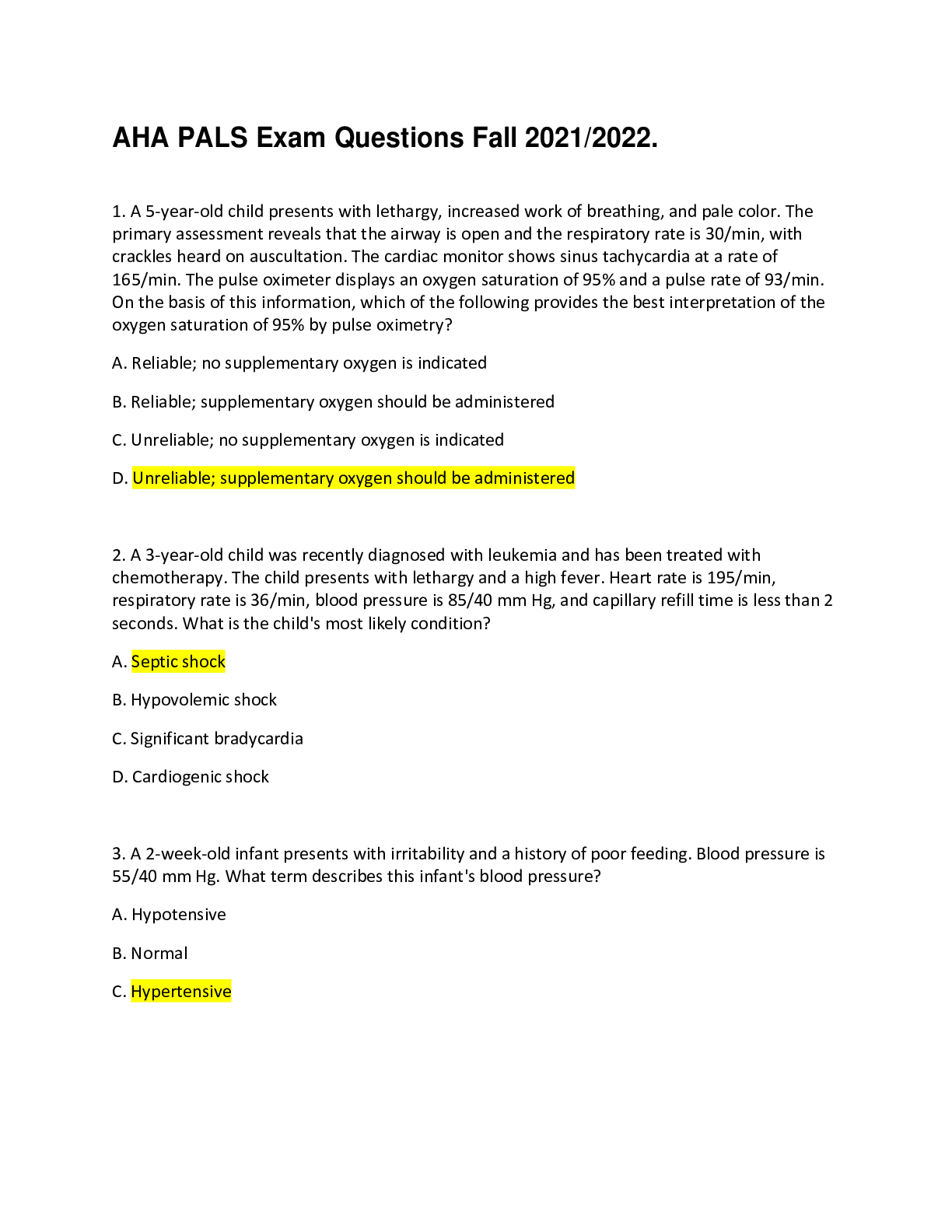
Reviews( 1 )

by Yasser · 5 months ago
Document information
Connected school, study & course
About the document
Uploaded On
Aug 30, 2022
Number of pages
19
Written in
Additional information
This document has been written for:
Uploaded
Aug 30, 2022
Downloads
10
Views
825




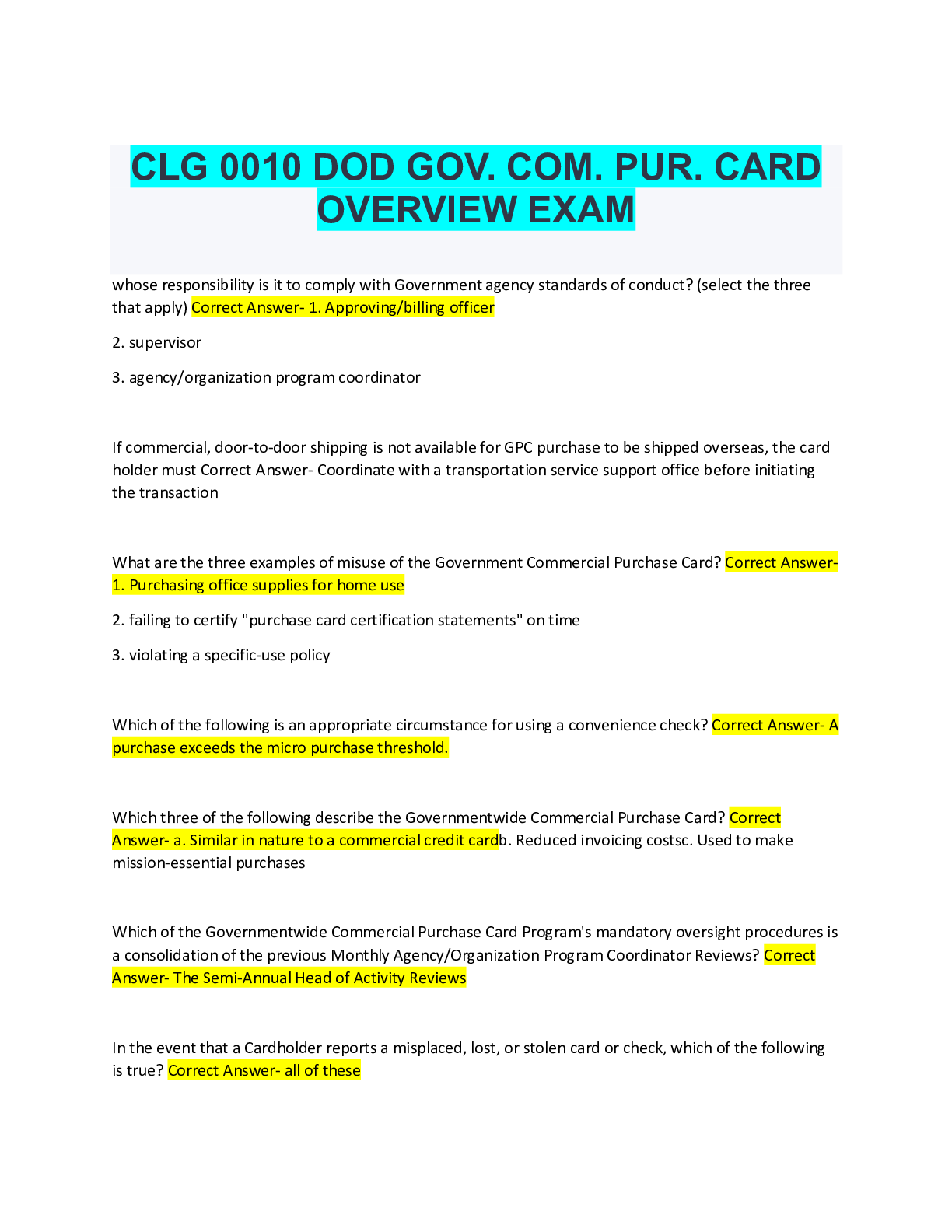



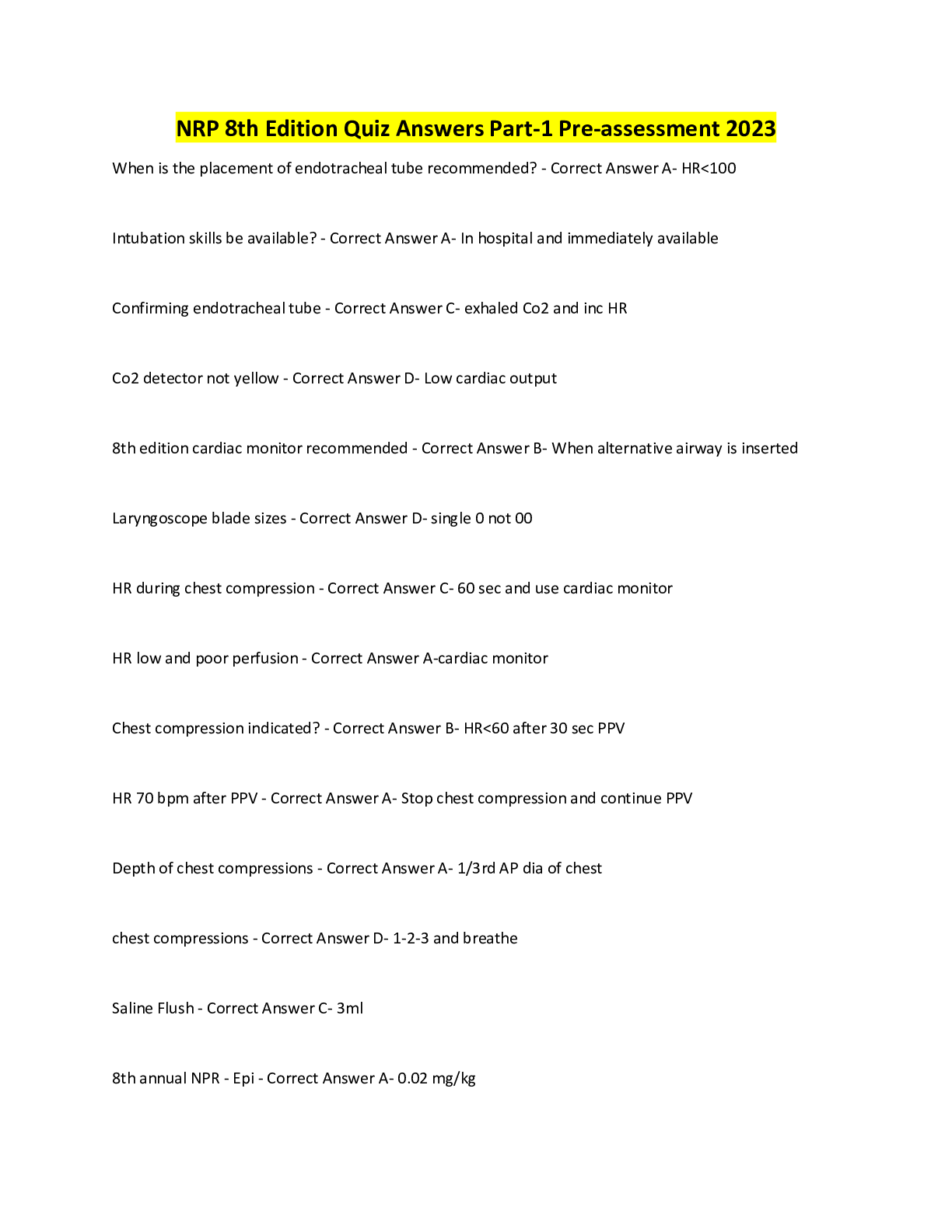

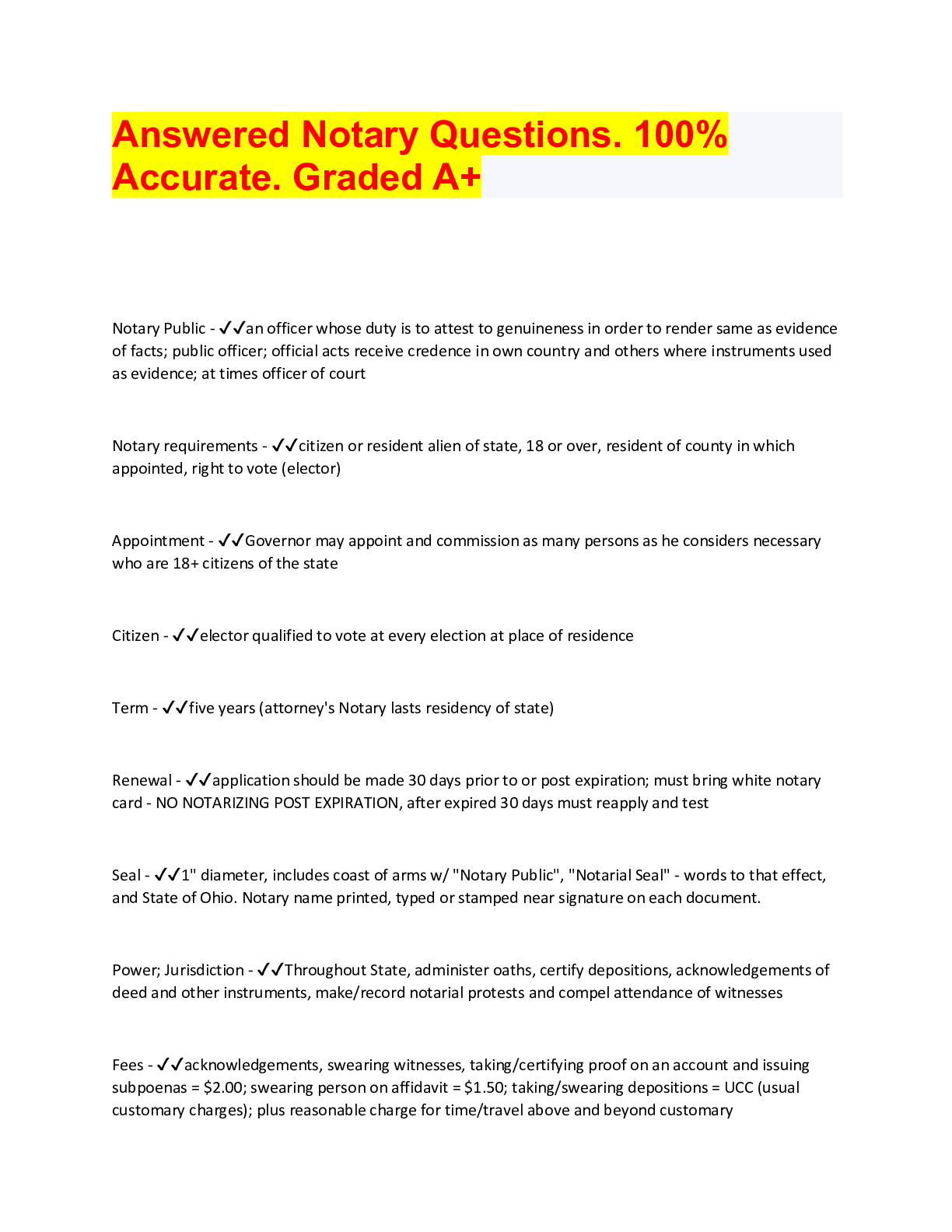

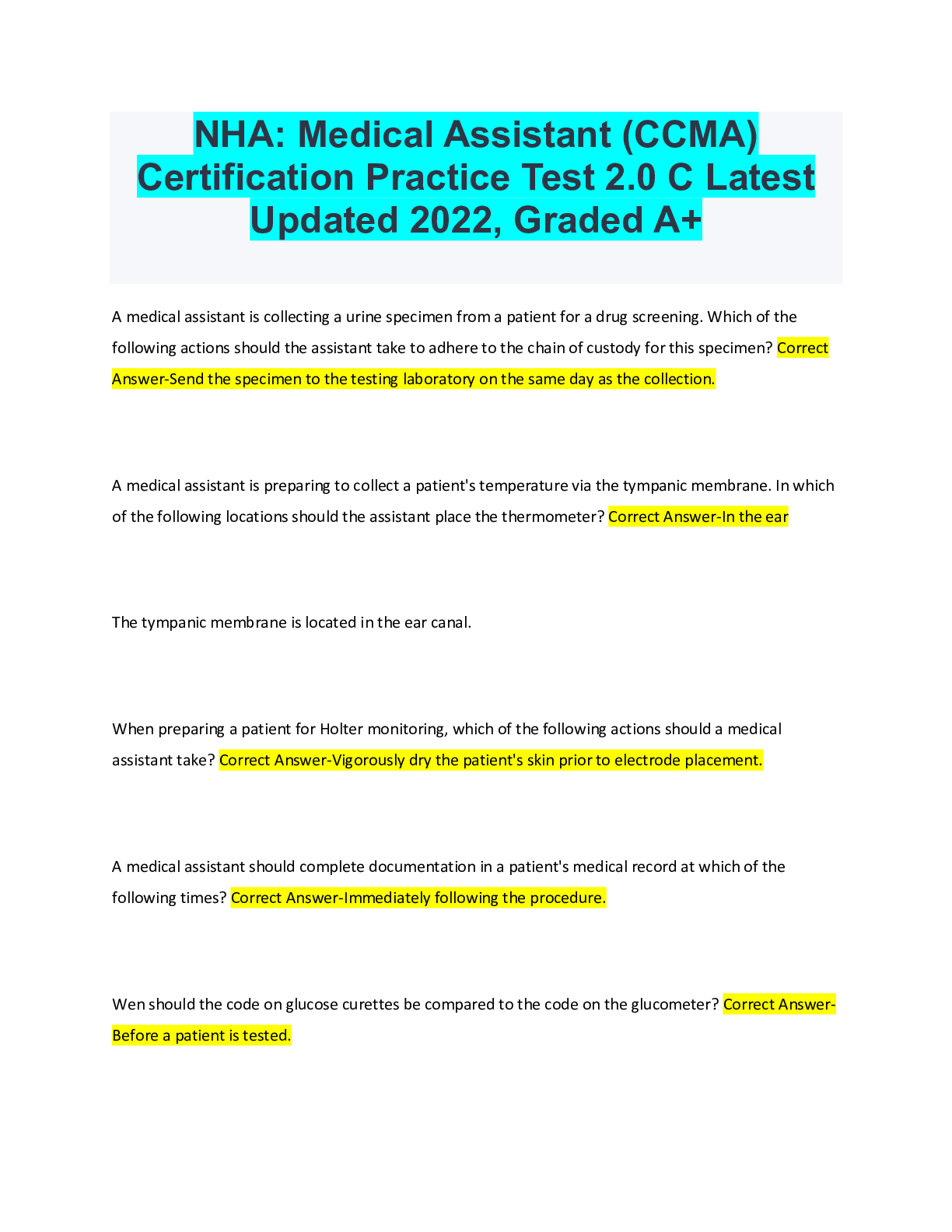
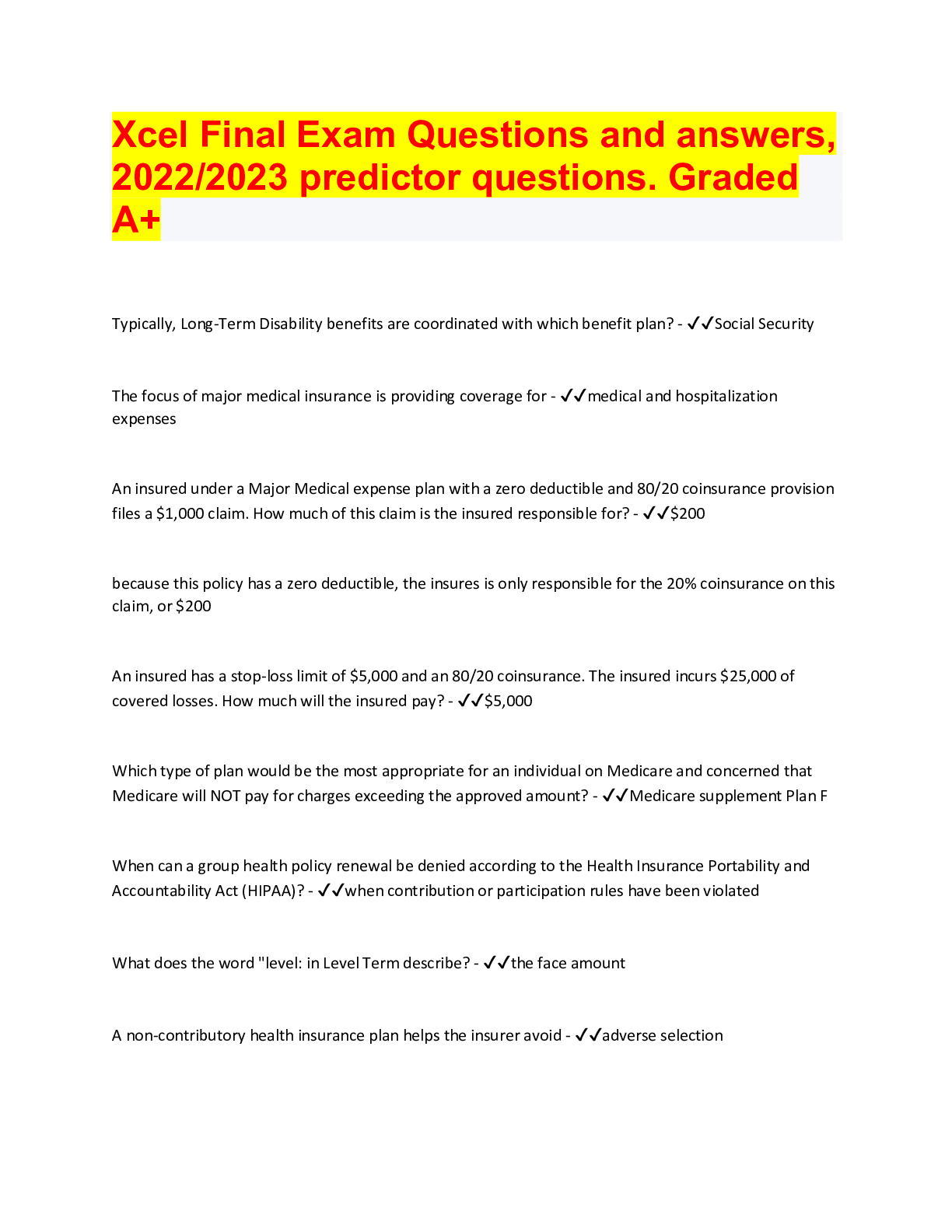
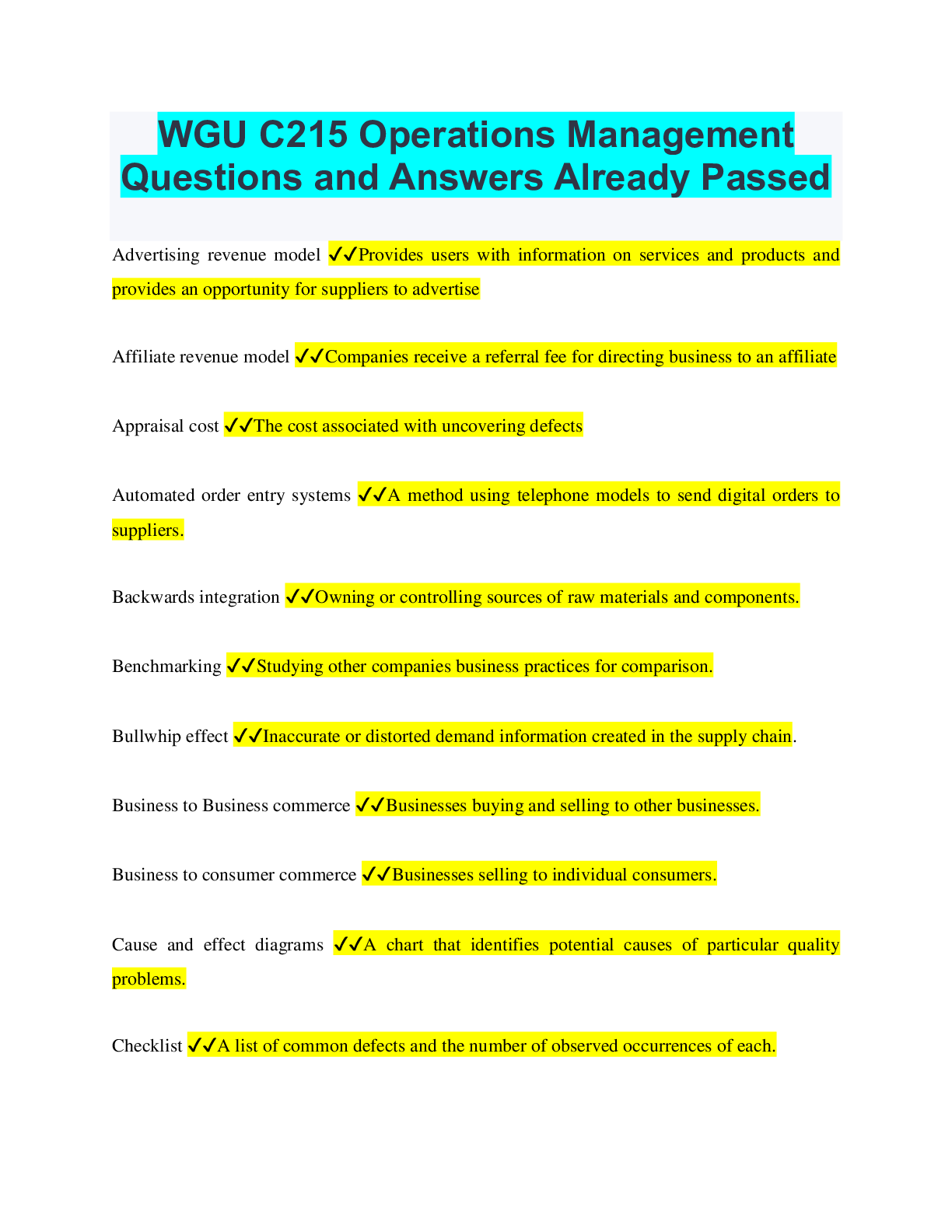
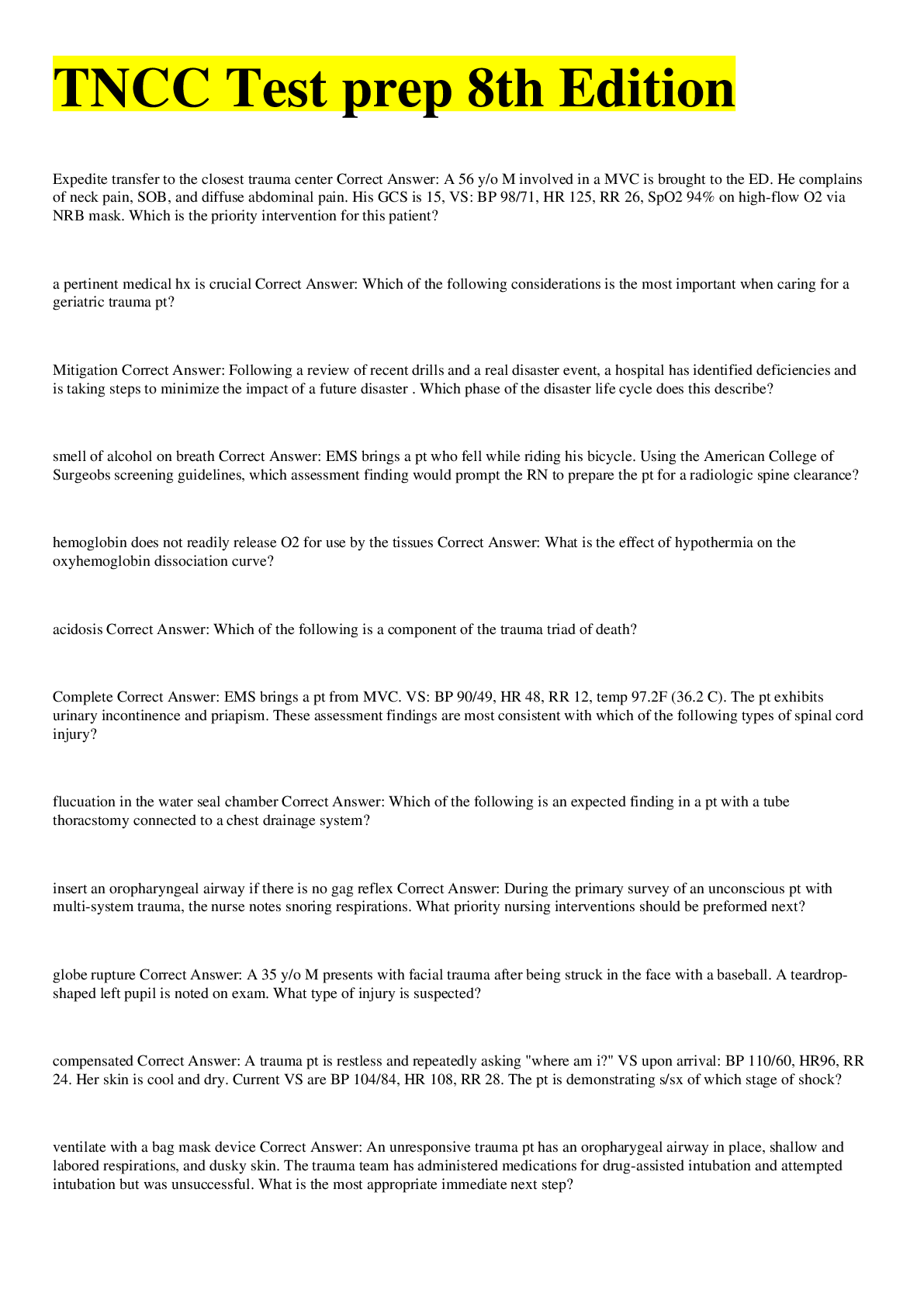
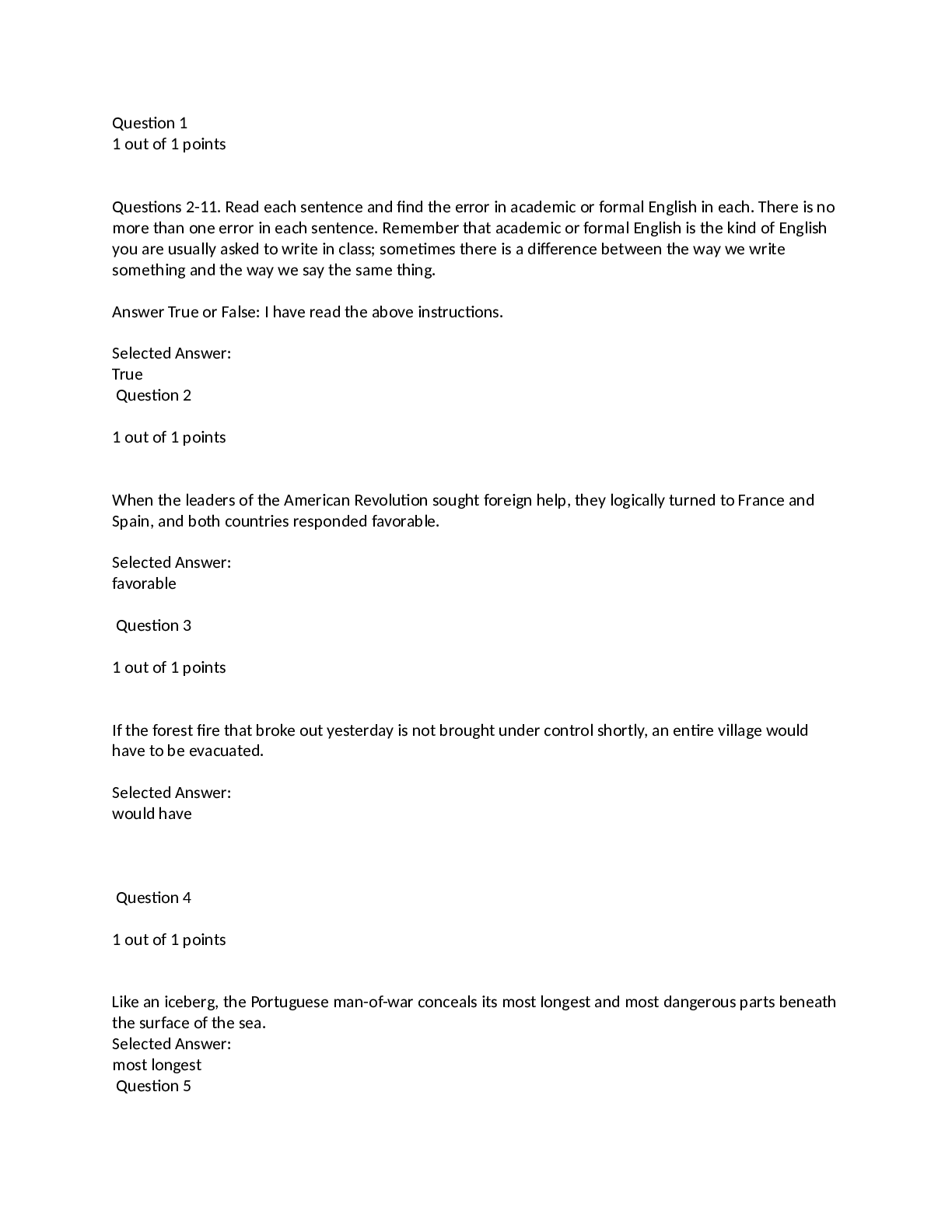
.png)
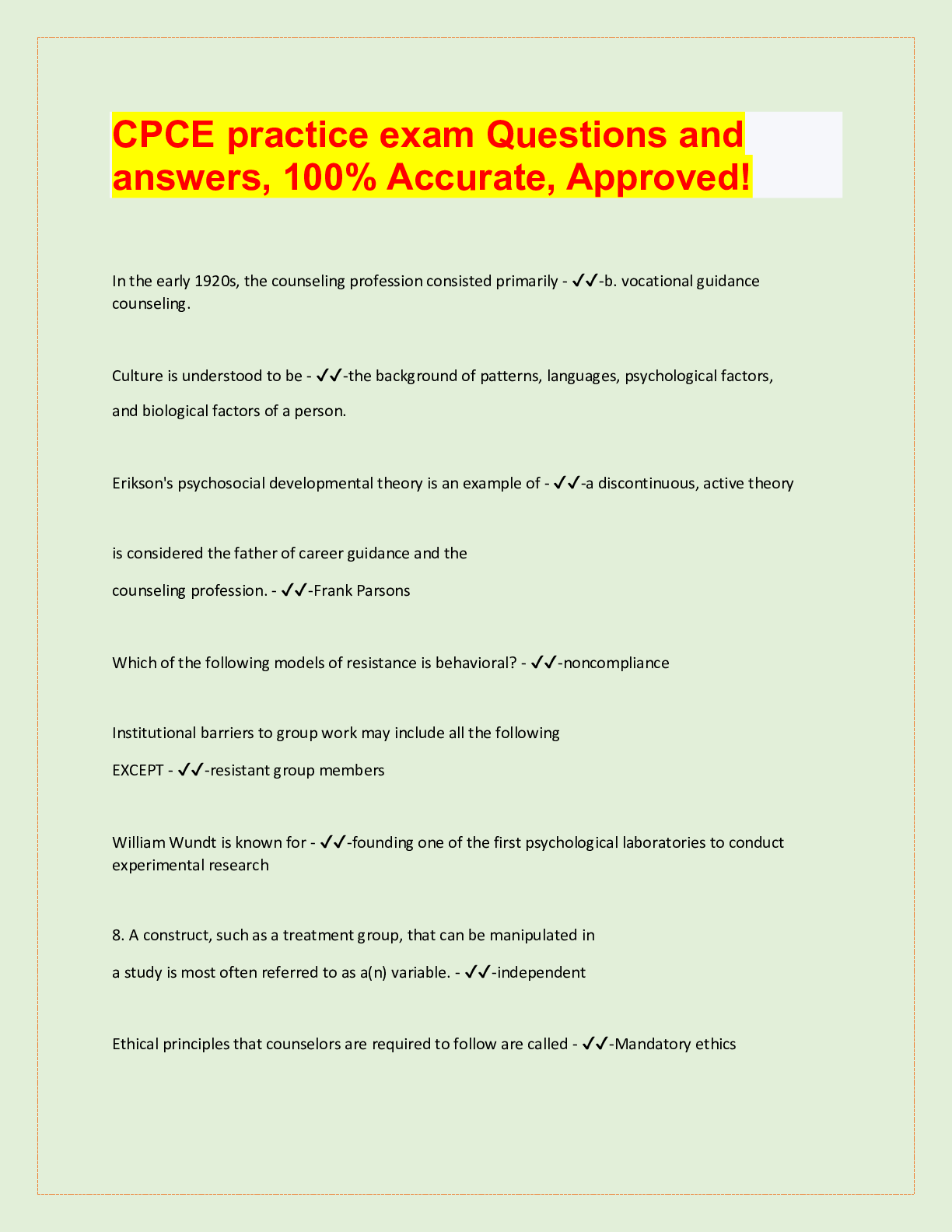
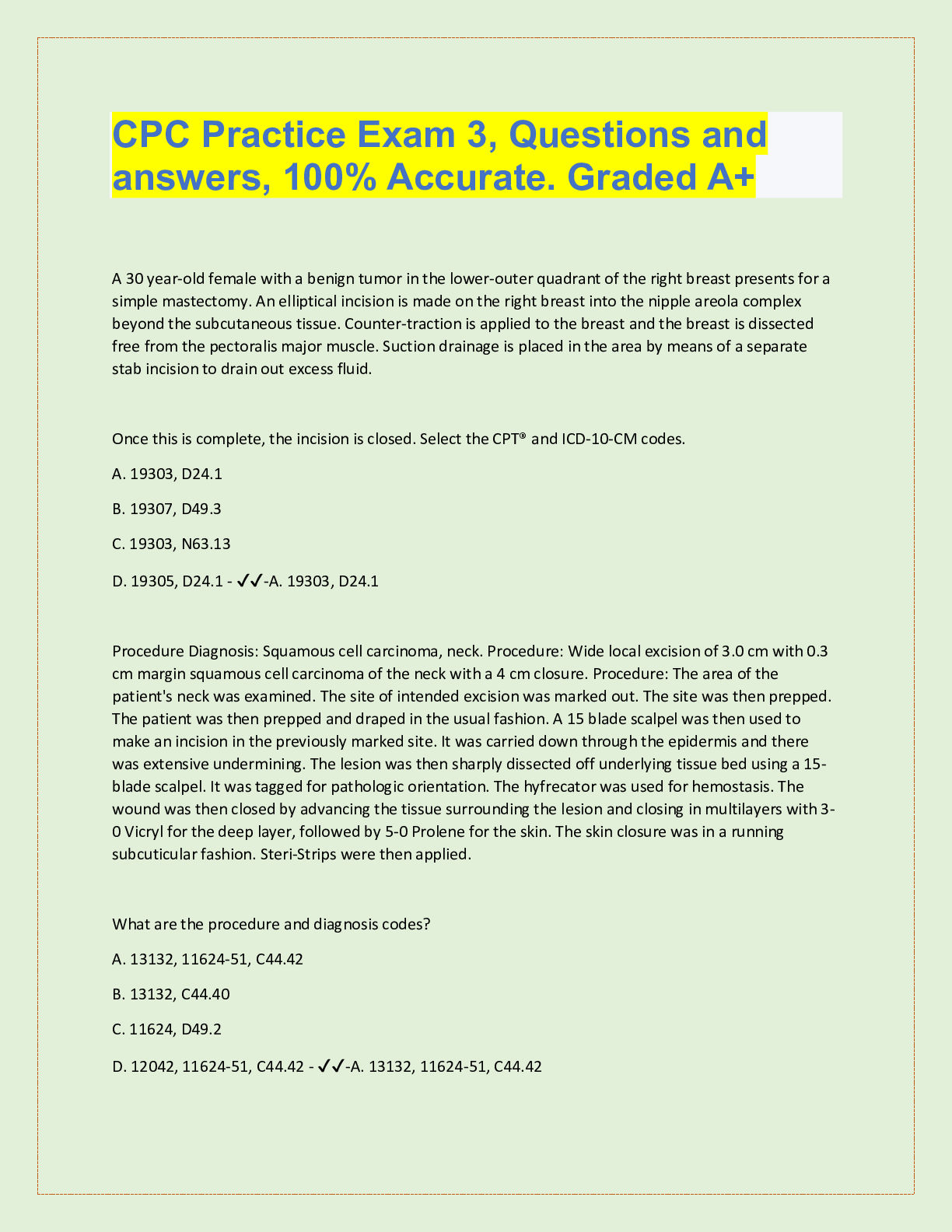
.png)

.png)


.png)

.png)
.png)
.png)

